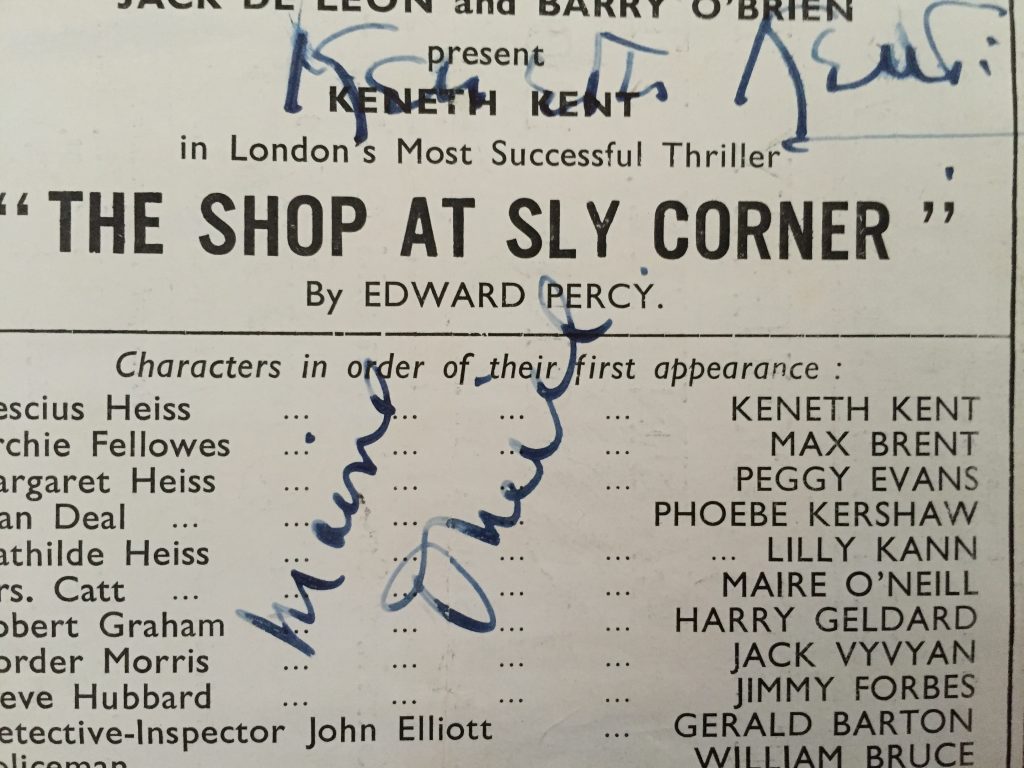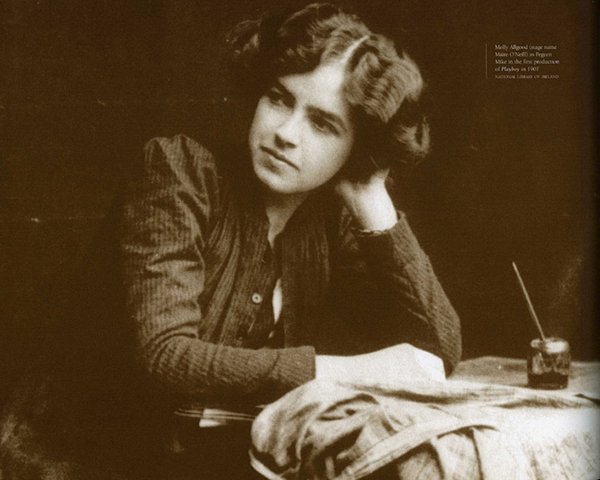
Marie O’Neill (Wikipedia)
Marie O’Neill was born in 1886 and was an Irish actress of stage and film. She holds a place in theater history as the first actress to interpret the lead character of Pegeen Mike Flaherty in John Millington Synge‘s controversial stage masterpiece, The Playboy of the Western World (1907).
Born Mary Agnes Allgood at 40 Middle Abbey Street, Dublin, she was one of eight children of compositor George and french polisher Margaret (née Harold) Allgood,[2][3]she was known as “Molly”. Her father was sternly Protestant and against all music, dancing and entertainment, and her mother a strict Catholic. After her father died in 1896, she was placed in an orphanage. She was apprenticed to a dressmaker. One of Allgood’s brothers, Tom, became a Catholic priest.
Maud Gonne set up Inghinidhe na hÉireann (Daughters of Ireland) in 1900 to educate women about Irish history, language and the arts, and Allgood and her sister Sara joined the association’s drama classes around 1903. Their acting teacher, Willie Fay, enrolled them in the National Theatre Society, later known as the Abbey Theatre. Maire was part of the Abbey Theatre from 1906-1918 where she appeared in many productions.[9]In 1904 she was cast in a play by Irish playwright Teresa Deevy called Katie Roche where she played the part of Margaret Drybone, there were 38 performances in this production.

In 1905 Molly met Irish playwright John Millington Synge and they fell in love, a relationship regarded as scandalous because it crossed the class barriers of the time. In September 1907 he had surgery for the removal of troublesome neck glands, but a later tumour was found to be inoperable. They became engaged before his death in March 1909. Synge wrote the plays The Playboy of the Western World and Deirdre of the Sorrows for Allgood.
Under her professional name Maire O’Neill, she appeared in films from 1930-53, including Alfred Hitchcock‘s film version of Seán O’Casey‘s play Juno and the Paycock(1930). She made her American debut in New York in 1914 in the play General John Regan at the Hudson Theatre.
In June 1911 she married G. H. Mair, drama critic of the Manchester Guardian, and later Assistant Secretary of the British Department of Information, Assistant Director of the League of Nations Secretariat in Geneva, and head of the League of Nations office in London, with whom she had two children. He died suddenly on 3 January 1926. Six months later she married Arthur Sinclair, an Abbey actor. They had two children but divorced.
Her life suffered a full share of tragedies; she was crushed by her brother Frank’s death in World War I in 1915, her fiancé Synge died before they married, her beloved husband died after 15 years of marriage, and their son died in an air crash in 1942. Her sister Sara’s husband and baby died of influenza during the Spanish flu. Sara died two years before her; they had become estranged.
She died in Park Prewett Hospital, Basingstoke, England, on 2 November 1952, aged 66, where she was receiving treatment after being badly burned in a fire at her London home.
Joseph O’Connor‘s 2010 novel, Ghost Light, is loosely based on Allgood’s relationship with Synge.

